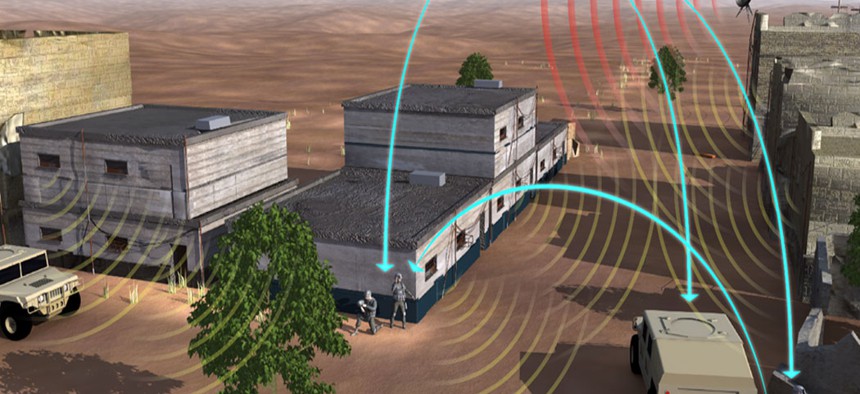Ultra-high-speed chip could make the spectrum feel less crowded
DARPA's analog-to-digital converter can analyze large swaths of the electromagnetic spectrum, keeping systems alter to jamming and other interference.
As the squeeze of the electromagnetic spectrum continues unabated, with more and more connected devices being added to the mix, the Defense Department has emphasized finding ways to make more efficient use of the spectrum. After all, the spectrum is fairly fast in its range of frequencies but it is finite, and not only does DOD need to find room for future devices but it must also free up 500 MHz of the spectrum it has for commercial use by 2020.
Military researchers have been working on several spectrum-sharing projects, such as the RadioMap program aimed at cutting down on congestion and interference in complex environments and the SSPARC (Shared Spectrum Access for Radar and Communications) program designed to improve sharing between military radars and communications, as well as with commercial communications.
The Defense Advanced Research Projects Agency, which runs RadioMap and SSPARC, has come up with another tool that can make considerably more efficient use of the spectrum while better protecting systems operating in contested environments. It’s a very high-speed analog-to-digital converter, or ADC, that has a processing speed almost 10 times greater than the best commercial ADCs available, which allows it to analyze a much wider range of the spectrum at a time and more quickly react to interference or other threats, DARPA said in a release.
As the name suggests, ADCs convert analog data in the spectrum into digital code, which lets computers analyze their input. But current ADCs can only handle a small portion of the spectrum’s wide range of frequencies at a time, which could leave them blind to data concerning radar, attempts at jamming or other communications, DARPA said.
By processing signals at a rate of more than 60 billion times per second, DARPA’s high-speed ADC, developed under its Arrays at Commercial Timescales (ACT) program, can detect and analyze any signal at 30 GHz* or below, which covers just about all of the frequencies military users would be interested in.
The downside of that processing speed, DARPA notes, is that it generates about a terabyte of data per second. That’s too much data to be sent to other electronics devices, so it has to be processed on board the ADC, which in turn requires powerful transistors.
Semiconductor manufacturer GlobalFoundries helped DARPA solve that with 32-nanometer silicon-on-insulator (SOI) technologies available through DARPA’s ongoing partnership with GlobalFoundries, a manufacturer of highly-advanced semiconductor chips, which allows the ADC to process that data within its power limitations.
“Our performers combined innovative designs with advanced fabrication facilities and techniques to create world-class technology,” said Troy Olsson, ACT program manager. “And we are already seeing exciting results that closely match our design expectations.”
*An earlier version of this story mistakenly made reference to 30 MHz and below.





